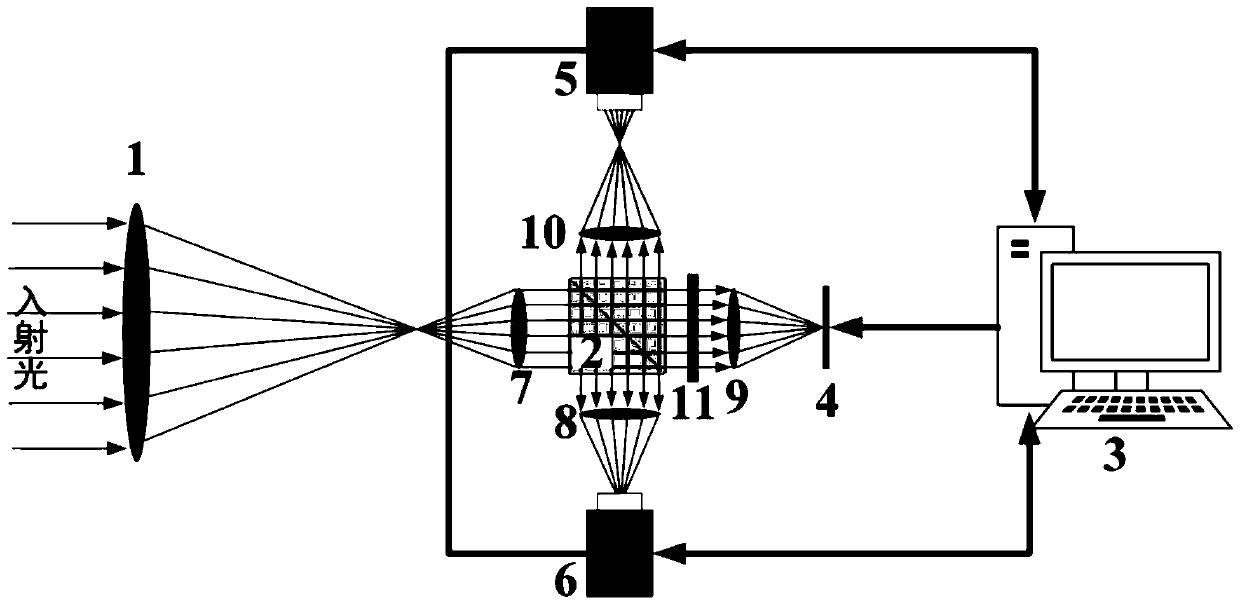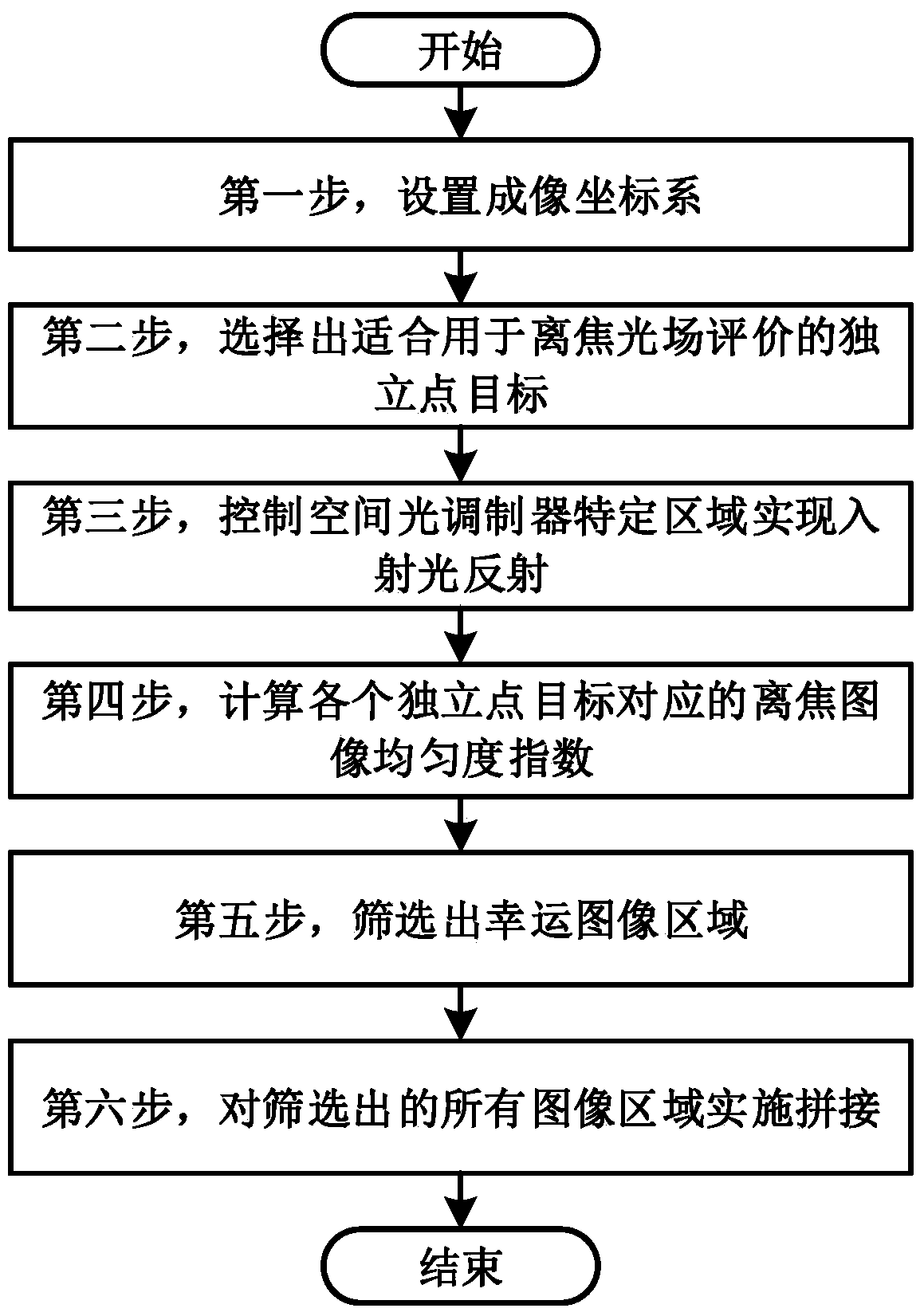A system for imaging astronomical objects
A target imaging and astronomical technology, applied in telescopes, optics, instruments, etc., can solve the problems of blurred local areas of the image, low probability of the entire clear image appearing, inappropriate evaluation of image quality, etc., to achieve high definition and improve luck The effect of the probability of the image
- Summary
- Abstract
- Description
- Claims
- Application Information
AI Technical Summary
Problems solved by technology
Method used
Image
Examples
Embodiment Construction
[0049] The present invention will be described in further detail below in conjunction with the accompanying drawings.
[0050] figure 1 Among them, the focal ratios of the relay mirrors 7, 8, 9, and 10 with the same focal length should be greater than the focal ratio of the telescope objective lens 1. The light band of the wide-spectrum polarization beam splitter 2 can be selected according to the target radiation characteristics (such as visible light band or infrared band). The size of the wide-spectrum polarization beam-splitter prism 2 should meet the requirement that all the light emitted by the relay lens 1 can enter, and the relay mirrors 7, 8, 9, and 10 should be installed as close as possible to the wide-spectrum polarization beam-splitter prism 2 to reduce the imaging loss. Vignetting effect. In the figure, the in-focus camera 6 and the out-of-focus camera 5 send image data to the central control device 3 . The central control device 3 sends image acquisition cont...
PUM
 Login to View More
Login to View More Abstract
Description
Claims
Application Information
 Login to View More
Login to View More - R&D
- Intellectual Property
- Life Sciences
- Materials
- Tech Scout
- Unparalleled Data Quality
- Higher Quality Content
- 60% Fewer Hallucinations
Browse by: Latest US Patents, China's latest patents, Technical Efficacy Thesaurus, Application Domain, Technology Topic, Popular Technical Reports.
© 2025 PatSnap. All rights reserved.Legal|Privacy policy|Modern Slavery Act Transparency Statement|Sitemap|About US| Contact US: help@patsnap.com



